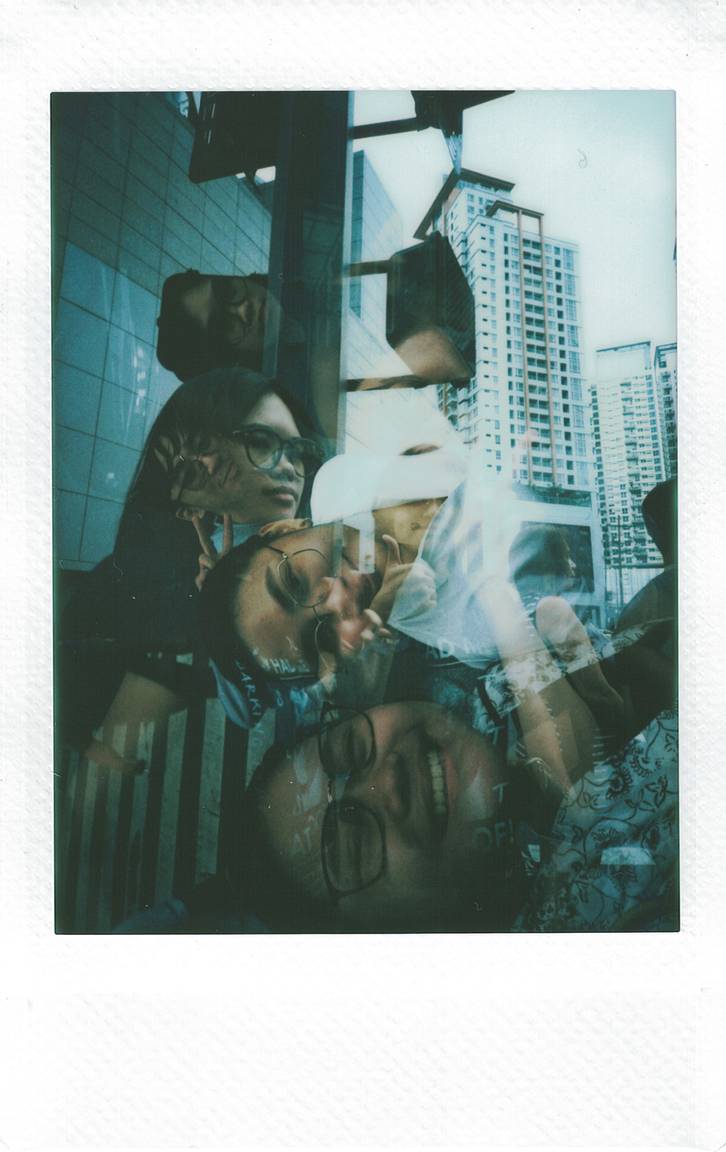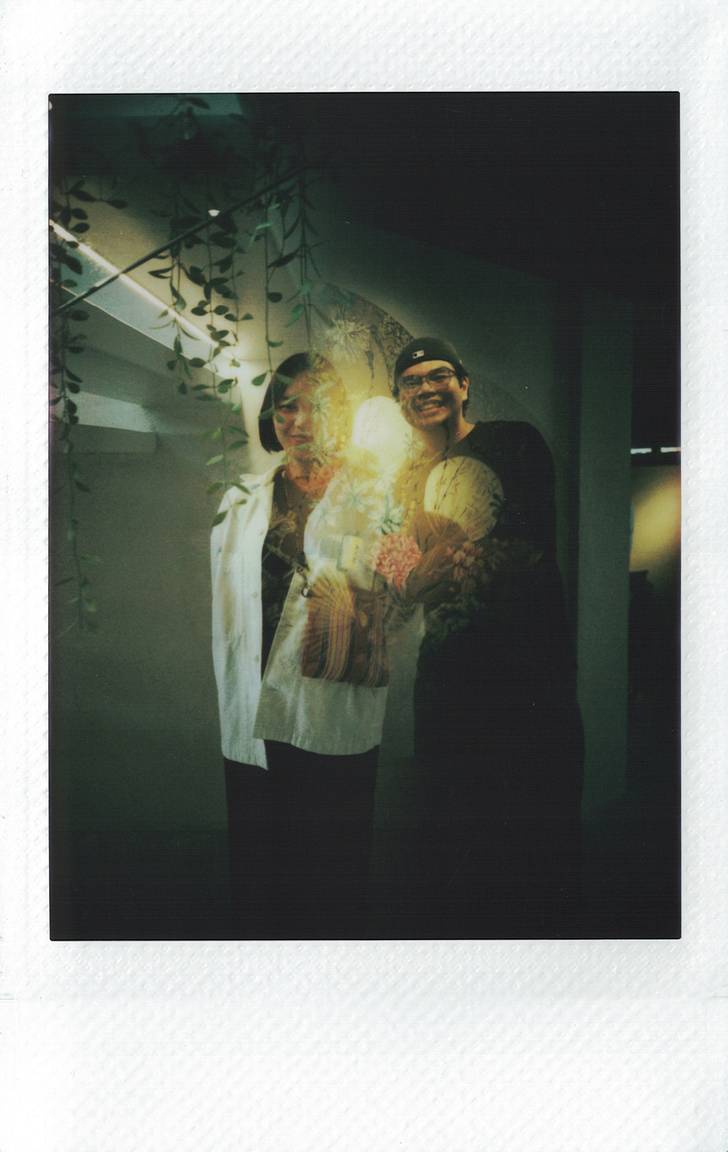Testing the Creative Possibilities of Multiple Exposure with the Lomo’Instant Automat Glass and Splitzer Lens
3 Share TweetAn instant photograph takes about 90 seconds to fully develop, making it the fastest and most tangible form of analogue photography. Appealing to those who value the speed of capturing a moment without sacrificing the materiality of the image, the Lomography instant cameras are a sure way to pull you into a new form and get you hooked— case study A: me.
To start the new year, I gravitated towards the Lomo’Instant Automat Glass for its namesake’s glass lens. With an easy feel in the hands and its built-in wide-angle lens (38mm f/4.5 equiv 21mm), it’s an instant camera that doesn’t need much convincing for you to believe in its powerful and increasingly impressive latitude and capabilities. The glass lens is ultra sharp, while still maintaining an obvious analogue look to it. I took the Lomo’Instant Automat Glass Magellan and tested out the multiple exposure Splitzer combination for two weeks. Prior to this, the only Lomography instant camera I had used was the Lomo’Instant Square Glass.
Note: The Splitzer lens attachment comes with the box set. The metallic stickers attached to the Splitzer are not included in the package, but let this serve as a reminder that you can always personalize and customize your instant camera unit to fit whatever theme or concept you want.
The rule of thumb when working with multiple exposures is to have darker colors and shadows present in your first photo (the foundational base) and the following photos you take can layer seamlessly over them.
The Splitzer lens attachment will allow you to creatively play around with composition, building new worlds you can transport yourselves into.
6-step routine:
1. Zone Focusing: Keep the focusing distance in mind and adjust accordingly.
2. Attach Splitzer: Place the Splitzer over the instant camera's lens.
3. MX Button: Ensure the MX Button is lit up to successfully utilize the feature. Click the shutter.
4. Rotate Splitzer: Spin and adjust the Splitzer to capture other corners of the frame.
5. MX Button pt. 2: Repeat step 3 until you’ve captured the intended image. Once done, click on the MX button again, and the Instax film will be released.
6. Repeat.
With a mix of photographs taken indoors and outdoors — the sun shining through and the overcast of the gloom — these images channel versions of my childhood television shows such as Teen Titans Go and Codename: Kids Next Door with the color scheme, action poses, events happening, and other adjacent things in essence. See the results and the log book notes I took down below: a series of “wrong” guesstimates and mistakes turned into surprisingly fun and slightly impressive (?) instant photographs for some first few attempts.
2 Exposures
A.1. Half Splitzer, 1m, MX
A.2. Half Splitzer, 0.6m, MX
Marga and Javier on a sunny afternoon. These photos came out a little more overexposed than I had hoped. I could have tried a -1 EV for the second photo, but overall, I'm really happy with the shadows and deep contrasts.
2 & 3 Exposures
B.1. Half Splitzer, 1m, MX
B.2. No Splitzer, 1m, MX
C.1. Half Splitzer, 1m, MX
C.2. Half Splitzer, 1m, MX
C.3. No Splitzer, 0.6m, MX
Taken in LomoAmigo Aya Cabauatan's BALAY KŌBŌ. A series of leading lines amidst a bright blue sky in the home + studio made for the sun.
3 Exposures
D and E.1. No Splitzer, 1m, MX
D and E.2. Half Splitzer, 1m, MX
D and E.3. Half Splitzer, 1m, MX
Taken in LomoAmigo Aya Cabauatan's home + studio BALAY KŌBŌ.
3 Exposures
F and G.1. No Splitzer, 1m, MX
F and G.2. Half Splitzer, 1m, MX
F and G.3. Half Splitzer, 1m, MX
Motion and movements in a sea of people; simulating the "Where's Wally?" book series.
3 & 4 Exposures
H.1. No Splitzer, 1m, MX
H.2. Half Splitzer, 1m, MX
H.3. Half Splitzer, 1m, MX
H.4. No Splitzer, 1m, MX
I.1. Partial Splitzer, 0.3m, MX
I.2. Partial Splitzer, 0.6m, MX
I.3. Half Splitzer, 0.6m, MX, Flash
Testing the instant camera's capabilities for indoor and outdoor environments + low light performance with the largest aperture of f/4.5 when set to 0.3m.
5 Exposures
J.1. No Splitzer, 1m, MX
J.2. Partial Splitzer, 0.6m, MX
J.3. Partial Splitzer, 0.6m, MX
J.4. Partial Splitzer, 0.6m, MX
J.5. Partial Splitzer, 0.6m, MX
The original concept for the final instant photo was meant to be a player card/band group photo. I'd give it a 5/10 composition rating but 10/10 lighting and technical conditions!

The Splitzer lens attachment is a tool that can help you discover the countless possibilities and creative ways to compose an image. By using it, you can create engaging parallel elements and motifs in your photos. Unlike other lens attachments that create a strict, straight-line cut-off, the Splitzer allows the edges of images to merge and bleed onto layered photos, creating a unique and dynamic effect. This lens attachment also allows for tilts, shifts, and new shapes and sizes to emerge.
This fun instant MX experience helped me better appreciate how Lomography's cameras are designed to cater to exactly these kinds of multiple exposure experimentations and open up doors for different kinds of creative possibilities to thrive in. With just a click or slide of a button, one can successfully access the feature and experiment with its accessories within seconds. All in all, this brings a more engaging experience for everyone, encouraging experimentation and exploration in one’s analogue photography practice and overall visual language.
For my next tipster attempt with a Lomography instant camera, I plan to test more of the exposure compensation options (+1 EV, -1 EV), Long/Bulb-Exposure, Self-timer (remote), the Close-Up Lens, and Gel Filters to see just how far we can take the Lomo’Instant Automat Glass in terms of creative expression and experimentation.
What is the largest number of exposures you have taken on a single instant photo? How did the photo turn out?
See how far and just how crisp the Lomo’Instant Automat Glass can take you and share your photos with us here at Lomography!
written by macasaett on 2024-03-21 #gear #tutorials #multiple-exposure #tipster #glass-lens #instax-mini-film #lomo-instant-automat-glass #splitzer-lens-attachment













































No Comments